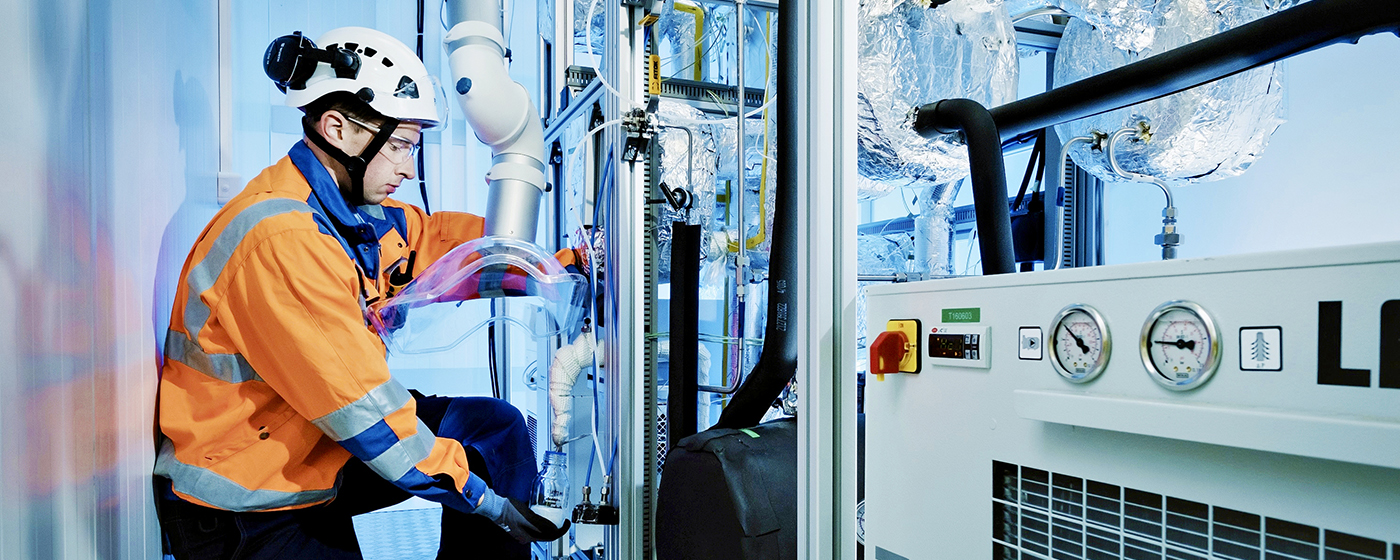Power-to-X (P2X) means converting electricity into other products, such as energy products, chemicals or even proteins. These solutions are also known by the umbrella term power-to-product. The motivation for developing new P2X solutions is to reduce carbon dioxide emissions and combat climate change.
“There is already a huge demand for emission-free electricity production, and it is increasing rapidly around the world. P2X can provide a transmission and storage solution for this clean energy generation. For example, it enables the electricity from solar or wind parks to be transferred to another time or place. In addition to different energy products, P2X can help to create e.g. carbon neutral products for the chemical industry,” says Janne Kärki, Senior Scientist at VTT.
Competition to develop hydrogen products is heating up
One of the most significant P2X solutions is to produce hydrogen by water electrolysis. Around the world, substantial sums are now being invested in a variety of solutions that use hydrogen.
“In industry, hydrogen is used for example in producing ammonia and refining oil. The hydrogen used by industry is still based on fossil fuels, but it could be produced from water and clean electricity. Several P2X products combine hydrogen and carbon dioxide, which can be captured from industrial sources or directly from the air,” Kärki explains.
Products that combine hydrogen and carbon dioxide could also be produced successfully in Finland.
“We have an abundance of clean water, which is necessary for electrolysis. At the same time, the process releases oxygen, which can be used for industrial or other purposes. In the future, Finland could have combined heat and hydrogen (CHH) plants that produce hydrogen as well as district heating using the waste heat from the electrolysis process. Finland and Finnish companies should get involved in developing hydrogen-based products. The race is on, and now is the time to get ahead,” Kärki says.
The main grid would benefit from flexible options
From Fingrid’s perspective, the opportunities that P2X presents in terms of energy storage could offer important new methods for maintaining the power balance in the electrical energy system and managing transmissions on the main grid. Alongside sector integration, power-to-product solutions support the main grid when it is subject to fluctuations in electricity generation due to renewable forms of energy.
“The viability of longer-time electricity storage – periods longer than 24 hours – has so far been problematic, so P2X could play a key role in managing the power balance and transmissions in the future. At the same time, sector integration is consolidating the energy sectors, so in addition to the opportunities provided by P2X, it will be possible during windy seasons to charge other energy storage facilities such as the batteries of electric cars and heat storage facilities. On cold, dark winter days and periods without strong winds, P2X products could play a key role in ensuring the supply of electricity,” says Tuomas Rauhala, Manager of Fingrid’s Market Innovations unit.

For example, wind power can produce hydrogen when it is windy and there is excess electricity production in relation to consumption. However, Janne Kärki says that it remains to be seen how many plants will offer balancing energy services over the long term.
“The technology used by electrolysis plants is ideal for rapid balancing energy service. However, P2X production facilities will only be viable investments if they can also be operated during higher electricity price periods. Policy measures could affect the viability of P2X products. In principle, emission-free electricity must be cheap, and the end product must be valuable enough to make it profitable to make P2X products,” Kärki considers.
Rauhala notes that the structure of energy generation and consumption will change radically.
“New P2X production plants have the potential both to produce and to consume enormous amounts of energy, so electricity will flow in two directions. When there is plenty of electricity on offer during windy and sunny periods, it will be transmitted to places where it can be stored, unless there is a local storage facility. When the output from renewable generation facilities is low, electricity will be taken from storage to consumption.”
Future changes are taken into consideration in the planning of the main grid
Risto Kuusi, Senior Expert in Fingrid’s Strategic Network Planning unit, states that major investments will need to be made in P2X in order for Europe to become climate neutral in line with the agreed schedule.
“Electricity consumption will increase in any case, because there are no competitive alternatives for emission-free energy generation. The way we plan the main grid is substantially impacted by Finland’s share of global P2X investments and the locations in which investments are made. In terms of electricity transmission, it would be most cost-efficient to have production near consumption, but there are several other factors that must be considered when investing,” Kuusi says.
When Fingrid prepares its network vision, it envisages several potential scenarios for the future.
“We are looking for solutions that address the needs of as many different scenarios as possible. The reliability of the main grid cannot be compromised, even though changes occur at a rapid pace,” Kuusi says.







